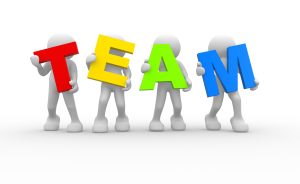Following Acquired Brain Injury (ABI) the person may benefit from support to use augmentative and alternative communication (AAC). AAC refers to the use of strategies to support (augment) communication. AAC systems are used by children and adults who have a communication impairment affecting their ability to speak and/or understand language. AAC systems incorporate a wide range of strategies from the very simple to the technologically complex e.g. use of pictures, gestures, writing, communication boards, electronic voice output aids or computer aided communication such as that used by Professor Stephen Hawking.
The term ‘communication aid’ is used to refer to an actual physical device used to support communication e.g. communication board, technological devices.
For the person who has impairments affecting their ability to understand spoken language , the use of writing, gesture, mime, pictures or objects can help support the ability to understand. Demonstrating an activity when communicating with them can also help understanding. These are examples of AAC which support the person’s understanding of other people’s communication.
For people who have problems expressing themselves because of physical or linguistic impairments AAC may include the use of writing, pictures, alphabet boards, texting with a mobile phone or use of computer aided technology.
The type of AAC selected will depend very much on which is the most effective for the person to use to express themselves. This choice depends on the outcome of assessment.
AAC systems can be divided into ‘low tech’ and ‘high tech’ systems:
- Low tech systems include use of gesture, pictures, symbols, writing and drawing. An example of a successful, well trialled low tech system is Talking Mats: this uses cards with pictures or symbols on them to help the person express themselves and make their choices and preferences clear.
- High tech systems include use of tablet devices, computer aided systems and electronic devices designed specifically as ‘voice output aids’.
No AAC system is as efficient as everyday communication using abilities of speech, listening and understanding. An AAC system requires the active support of the people around the communicatively impaired person and an environment which facilitates the use of AAC.
In some ways, we all use elements of AAC in our everyday lives – gesture, facial expression, drawing to help someone understand how something works etc. These are strategies we use naturally to support communication. However, following brain injury, the person with ABI and their communication partners may require an extra focus on supporting communication using augmentative/alternative methods.
Initial referral to a Speech and Language Therapist should be made for assessment for suitability for AAC, provision of AAC strategies and support for implementing the most appropriate AAC system/communication aid. However, successful implementation and use of AAC requires a team approach: the person with brain injury and their families are the central members of this team. Other team members may include:
- Support/care workers.

- Nursing staff.
- Occupational Therapist.
- Physiotherapist.
- Clinical/Educational Psychologist.
- Educational Staff.
Assessment for Augmentative and Alternative Communication
How to Help the Person who uses Augmentative and Alternative Communication
For further information about AAC, resources and people’s own experiences and stories, please click onto the following websites: